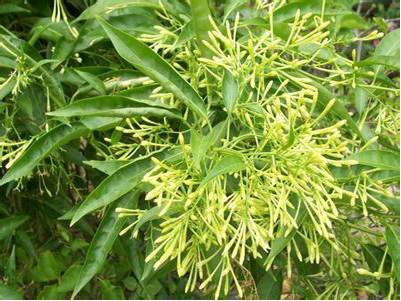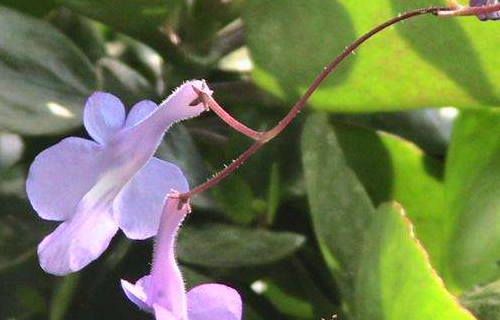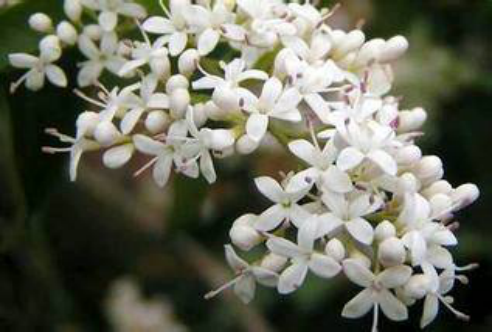Planting technology of night primrose
What are the points for attention and technical points for planting evening primrose? Let's take a look.
First, soil selection
Night incense likes slightly acidic soil, and it is suitable for those who are loose and fertile and rich in organic matter. If the soil is too alkaline, it can be acidified by adding ferrous sulfate or fermented rice washing water.
Second, lighting
Night incense likes light, and the condition with sufficient light is more suitable for its growth. But the summer afternoon sun is so strong that it should be properly shaded to prevent burns.
III. Reproduction
Nocturnal incense can be propagated by cutting or sowing. The survival rate of cuttings is very high in spring, and the results can be seen in summer. Or collect seeds after the summer flowering, sow next year, the budding rate is very high, easy to survive.

Night incense is very easy to grow, and because of its ornamental and mosquito repellent value, it is deeply loved by flower friends. If you want to know more about flowers, follow us!
Introduction to the planting technology of night incense _ picture appreciation of night flowers
Nocturnal incense, also known as night orchid, clove, night fragrance, is a perennial vine-like twining herb, its growth of twigs is very weak, there are soft whiskers, and have milk. The flowers of evening primrose are generally yellowish green, and the ones that open at night are more abundant. They are often planted as potted ornamental plants. Nocturnal incense when the flowers open, will emit a strong smell of flowers, will make people feel difficult to breathe, so it is not suitable for indoor breeding. Next, let's take a look at the introduction of the planting technology of night incense, as well as the picture appreciation of night flowers. [night Flower Photo appreciation-characteristics] Night incense is a kind of rattan-shaped herbaceous plant, its petals have a climate, and generally when the air humidity is relatively high, the stomata will open, and after the stomata are enlarged, the fragrant flower oil will evaporate, and the fragrance will become bigger at night, and the aroma will be more intense. Nocturnal incense originated in South America, but now it is distributed in Yunnan, Guangdong, Guangxi, Taiwan and other regions of China. It is called a very fresh flower or a semi-wild vegetable plant eaten by buds. It not only has a very good ornamental value, but also flowers can be served and medicinal extreme, with the effects of clearing the liver and eyesight, dispelling wind and dehumidification, removing nebula of the cornea, measles, swelling and pain of the eyes, strengthening muscles and bones, and so on. Flowers usually bloom in summer or autumn, and the leaf axils will bloom in the shape of yellow-green bell flowers, will emit a strong fragrance, it has the effect of mosquito repellent. [night fragrant flower photo appreciation-growth habits] Night incense generally grows in woodland or bushes, and likes to grow in a sunny, well-ventilated, loose, fertile, moist environment. It is more drought-resistant and barren, but it is not cold-resistant or waterlogging-resistant. It usually stops growing when the leaves fall in the cold winter, but when new branches are issued in the warmer spring season, axillary buds or flower buds will grow on each node, and with the continuous change of the growing season, lateral branches or inflorescences will grow, the flowering period is usually from May to October, and the flowers will give off a fragrant smell when they are in full bloom. And the fragrance of the flowers will be strong at night, and the fruiting period is usually in winter. The growth adaptability of night incense is very strong, and the vitality is very exuberant, and the root system is also relatively developed. The temperature suitable for its growth is about 20 degrees Celsius. It belongs to a plant that likes to grow in a fertile environment, and it should be fertilized more during the growing period. Its moisture requirements are also relatively high, watering in summer, and keeping the soil moist in winter, a plant that is more resistant to pruning. [introduction to the planting technology of night incense] the propagation methods of night incense mainly use cutting propagation, plant propagation, striping propagation, seed seedling propagation and so on, and the most common method is cutting propagation. Generally, cutting propagation is carried out in spring, autumn and summer to maintain a warm and humid growth environment, and it is best to cultivate it in a rich sandy soil. Night incense has a very strong vitality, it is very easy to grow. 1. Soil: nocturnal incense likes to grow in a slightly acidic soil that is fertile and loose, with good drainage and rich in organic matter. Potted plants generally choose peat soil, rotten leaf soil, coarse river mud, farm manure and so on. At the bottom of the pot soil, you can put some broken bricks in the shape of particles, which is more conducive to drainage. two。 Environment: nocturnal incense likes to grow in an environment with good ventilation, which is generally suitable for breeding on a sunny balcony from May to September, and avoid the direct light in summer. 3. Watering: nocturnal incense grows most vigorously in summer. It is necessary to maintain the wettability of the potted soil, water once a day, and spray water on the leaves 1-2 times during the period of nocturnal seedlings. 4. Fertilization: in the growth process of night incense, liquid fertilizer is applied every half a month, while thin liquid fertilizer is applied every half a month in late April, so that flowers will bloom more luxuriantly in May. Shi Chunquan 883 and Huimanfeng and other more efficient humic acid liquid fertilizer, sister-in-law will be better. 5. Temperature: nocturnal incense is put into the shed in October, the suitable temperature is 8-12 degrees Celsius, if the temperature is lower than 5 degrees Celsius, the leaves will be yellow, and there will be fallen leaves or plant death. 6. Change the basin: the change of nocturnal incense is usually carried out before April in spring, and when changing the basin, you need to change the previous suddenly, and then add the newly cultivated soil. And it is easy to prune, so as to promote the development of new branches. After the change of the basin, it is necessary to maintain the wettability of the basin soil, there can not be stagnant water in the basin, after the change of the basin, it is found that there is a relatively tender leaf sagging phenomenon, which needs to be watered in time. 7. Prevention of diseases and insect pests: the diseases and insect pests that often occur in night incense include coal pollution, ring disease and so on, which can be prevented by spraying methyl topiramate. There are aphids, whiteflies, shell insects and so on, which can be controlled by using borers EC, Uranus, Kuaishaling, cypermethrin and so on. [night fragrant flower picture appreciation-Note] when planting evening incense, it is best to plant it outdoors as a good ornamental plant. Because flowers bloom at night will give off a strong fragrance, high blood pressure, heart disease patients will appear dizziness, depression, discomfort, dyspnea, chest tightness and other symptoms. In particular, long-term indoor farming will cause dizziness, cough, asthma, insomnia and so on. More recommended species of chrysanthemum the efficacy and function of dandelion the legend of apricot pruning of Dendrobium candidum
Night incense (night incense tree) planting method, night incense cultivation technique
Night incense, also known as nocturnal incense, is native to tropical America. Leaf blade cordate, margin pilose. Between summer and autumn, clusters of yellowish-green bell-shaped flowers bloom in the axils of the leaves, and when the treetops on the moon, it wafts out fragrance, which scares mosquitoes and is a good product to drive mosquitoes.
Growth habit
Like warm, humid and sunny environment, slightly resistant to shade, not resistant to severe frost, preferably over 5 ℃. No choice of soil. Cutting propagation is easy to survive.
Cuttage propagation
Select insert
The branches with strong growth and free of diseases and insect pests should be selected, and the sunny branches in the middle and upper part of the year should be selected on the same plant, requiring short internodes, strong branches and leaves, full bud tips, and unsuitable branches and overgrown branches that are about to bloom.
Selection of matrix
Peat soil and rotten leaf soil were respectively prepared at 3:3:4 in Gaza. The bed soil prepared in this way has the characteristics of increasing bed temperature, water retention, ventilation, fertility, partial acidity and so on, and is suitable for branches to take root and sprout.
Deal with the insert
The cuttings were treated with ABT rooting powder before cutting, which had the effect of promoting rooting. Cut the cuttings into a section of 8 cm to 12 cm, with 2 to 3 buds above. The cut in the lower part of the cuttings should be 0.5 cm below the node. The incision should be smooth, cut off the lower leaves, leaving only 2 to 3 leaves at the top, and the insertion depth is generally about 3 cm.
Root-forming condition
The suitable rooting temperature is 20 ℃ to 24 ℃, and the soil temperature is 3 ℃ to 5 ℃ higher than the air temperature.
The relative humidity of the bed air is 80% to 90%, which is favorable for rooting and requires light of about 30%. The moisture should be suitable, which is slightly higher at the initial stage and slightly dry at the later stage, and the suitable period for local open-field cutting is from early May to mid-June, which is in a better climate, which can better meet the conditions of temperature and humidity needed for cuttings to take root.
Strengthen the management after insertion. After planting, it should be watered thoroughly, covered with plastic film, placed in a shaded place, or scattered grass on the film to prevent direct sunlight, and increase light at night to help its cuttings survive, air once or twice a day to replenish the oxygen needed and prevent diseases. To often spray water, keep the inserting bed moderately moist, but do not spray too much water, otherwise the inserting bed is too wet, often affecting the cuttings healing and rooting. When the new root grows to 2 cm to 3 cm, it can be transplanted into the basin at the right time.
Field management
(1) weeding by ploughing. Seedling ploughing and weeding 1 Murray for 2 times. After planting in the field, due to the large row spacing, early attention should be paid to weeding in mid-tillage or proper interplanting of short-term vegetables, but weeds are not easy to grow after plant growth.
(2) topdressing. Thin human feces and urine were applied twice in seedling stage combined with weeding by ploughing and weeding. After planting in the field, combined with ploughing and weeding, compound fertilizer or rotten human and animal manure and urine were applied 3 times a year, and could be watered if there was no rain for 2 days after fertilization. Potted plants were fertilized according to the plant growth potential, and a small amount of urea was applied in about 3 months.
(3) Water management. Night incense is afraid of stagnant water, it is appropriate to see the soil dry before watering, rainy days pay attention to eliminate stagnant water. Potted balconies should be watered every day in the dry and windy season. If conditions permit, you should often spray water to the leaves to increase humidity and make the plant grow vigorously.
(4) build a shed. Field cultivation needs to build a horizontal shed with a height of 1.8 m, so that the branches and vines can grow uniformly. Courtyard cultivation can be adapted according to conditions.
(5) Diseases and insect pests. Nocturnal incense has no disease, but the old branches planted for many years are often harmed by blowing cotton shell insects, which can be smeared with turpentine mixture to kill insects and, in serious cases, cut off the insect parts to make them sprout and grow again.
Harvest and utilization
1. Vegetables. Evening incense leaves, flowers, fruits can be used as vegetables, folk potted or planted in the courtyard around the hedge, can be harvested at any time, generally matched with eggs as soup, slippery, delicious and fragrant, clear liver and clear eyes.
2. For medicinal purposes. The leaves, flowers and fruits of evening primrose can be used as medicine, while traditional Chinese medicine is used as flower. Flowers can be harvested in full bloom, dried or dried. Flowers or leaves every day 3murmur6g or fruit 1 cut open water frying to remove nebula, extract poison and generate muscle, and treat conjunctivitis.
Through the detailed introduction of this article, I hope you can gain something! Thank you for your support and attention to the succulent flower bed!
- Prev

Five kinds of plants which are not suitable for long-term indoor culture
1. Mandala is like an invisible killer. Don't keep it at home. The whole plant is poisonous, one is that the fruit and seeds are the most toxic, and the other is the tender leaves, even the air-dried leaves are toxic. Its flowers are also narcotic and can make people excited and hallucinate after eating by mistake.
- Next

The propagation of evening primrose
Branch night incense has a strong sprouting ability, so we divide it into quantitative plants or several plants from the root to propagate. This method is fast, but it also has some limitations. Cuttings are most suitable for cutting propagation in spring and autumn. Night incense has strong propagation ability and is easy to grow adventitious roots, so the mother plant can be inserted into the soil for cutting.
Related
- Fuxing push coffee new agricultural production and marketing class: lack of small-scale processing plants
- Jujube rice field leisure farm deep ploughing Yilan for five years to create a space for organic food and play
- Nongyu Farm-A trial of organic papaya for brave women with advanced technology
- Four points for attention in the prevention and control of diseases and insect pests of edible fungi
- How to add nutrient solution to Edible Fungi
- Is there any good way to control edible fungus mites?
- Open Inoculation Technology of Edible Fungi
- Is there any clever way to use fertilizer for edible fungus in winter?
- What agents are used to kill the pathogens of edible fungi in the mushroom shed?
- Rapid drying of Edible Fungi

